- May 12, 2021
- Blog
- Posted by Felix.Weber
- Comments Off on Immediate Expensing of Capital Items in Federal Budget make Purchases More Attractive
 The government has introduced new measures in 2021 Budget making it more attractive than ever to purchase certain depreciable property like a Wintex or senseFly eBee Ag.
The government has introduced new measures in 2021 Budget making it more attractive than ever to purchase certain depreciable property like a Wintex or senseFly eBee Ag.
To enhance the Capital Cost of Allowance (CCA) deduction for Canadian-controlled private corporations (CCPCs), the Budget proposes “immediate expensing” of certain depreciable property. The expense is available for property acquired on or after April 19, 2021, that is available for use before Jan. 1, 2024.
- May 12, 2021
- Blog
- Posted by Felix.Weber
- Comments Off on Don’t Stress; Talk it Out
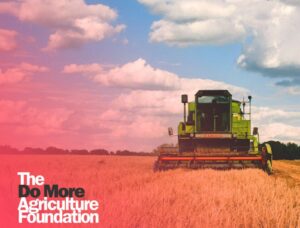 Spring is a very exciting time, it feels great to be back in the field, when all that crop planning and prep work during the winter is starting to be realized upon. It can be also be very frustrating when the weather does not co-operate, equipment breaks down, or other things go awry. Folks in agriculture are used to dealing with setbacks, but we all need to be fully in touch with our own mental health and to support others. The Do More Agriculture Foundation is hosting Talk it Out beginning May 5th, a biweekly zoom meeting a chance to hear from mental health care professionals,ask questions, and focus on the mental health of your circle.
Spring is a very exciting time, it feels great to be back in the field, when all that crop planning and prep work during the winter is starting to be realized upon. It can be also be very frustrating when the weather does not co-operate, equipment breaks down, or other things go awry. Folks in agriculture are used to dealing with setbacks, but we all need to be fully in touch with our own mental health and to support others. The Do More Agriculture Foundation is hosting Talk it Out beginning May 5th, a biweekly zoom meeting a chance to hear from mental health care professionals,ask questions, and focus on the mental health of your circle.
- May 12, 2021
- Blog
- Posted by Felix.Weber
- Comments Off on Future-Proofed: Lessons Learned Flying BVLOS with eBee X in Canada

Presented by CartoCanada in partnership with senseFly and Altohelix Corporation.
Come learn about the application process, use of visual observers, and why the eBee X fixed-wing drone is the simplest way for organizations to get approval from Transport Canada for BVLOS flight operations.
In this webinar you’ll learn about:
✅ Current considerations for Canada’s BVLOS application process
✅ Differences between Extended VLOS & BVLOS operations
✅ Operational comparisons of Quads & Fixed-wings on BVLOS
✅ Application advantages to get your program off the ground
Click to Reserve your spot today!
- April 24, 2021
- Blog, Production
- Posted by Brian Hall
- Comments Off on Soil Testing – Lots of Growth Opportunities
While I’m a big supporter of precision ag as a means to collecting data for better decision making, I was reminded recently we can’t lose sight of the fundamentals like soil testing, as boring as this may sound to growers. A 2015 Olds College survey by students highlighted the need to keep soil testing front and center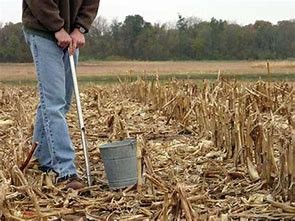 . Forty six percent of respondents only soil sample occasionally. Seventy-eight percent of farmers that use soil sampling see the information as useful, and 22% responded say they would consider zone sampling in the future.
. Forty six percent of respondents only soil sample occasionally. Seventy-eight percent of farmers that use soil sampling see the information as useful, and 22% responded say they would consider zone sampling in the future.
Why Farmers in Western Canada Use or Don’t Use Soil Sampling as Part of Their Nutrient Management Planning
- 78% of farmers had soil sampling done sometime in the past
- 22% had never used soil sampling
- 23% soil sample every 2-3 years
- 29% soil [...]
- April 12, 2021
- Blog, Production
- Posted by Felix.Weber
- Comments Off on The Limits of Base Saturation in Making Nutrient Recommendations
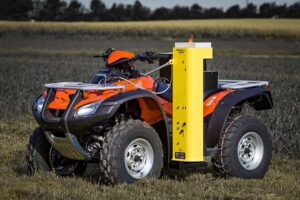 Every few years it seems base saturation rises as a winter topic as a means of making fertilizer recommendations. While base saturation has been used to determine whether a soil should be limed or not, it’s not a soil testing index, nor should be accepted broadly as an indicator for nutrient fertility. Developed for low CEC soils and highly weathered low pH soils, but not meant for many areas in Canada including Western Canada
Every few years it seems base saturation rises as a winter topic as a means of making fertilizer recommendations. While base saturation has been used to determine whether a soil should be limed or not, it’s not a soil testing index, nor should be accepted broadly as an indicator for nutrient fertility. Developed for low CEC soils and highly weathered low pH soils, but not meant for many areas in Canada including Western Canada
Read more
- February 28, 2021
- Blog, Products
- Posted by Felix.Weber
- Comments Off on Simplifying Plot deliniation with AI and Aerial Imagary
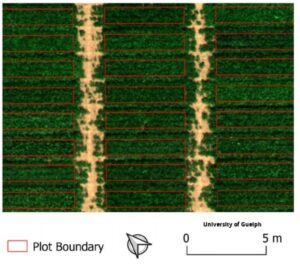 The University of Guelph has developed a method for precisely aligning aerial imagery over time with plot boundaries, that are fixed and do not vary from image to image. Plot extraction from aerial imagery: A precision agriculture approach (wiley.com)
The University of Guelph has developed a method for precisely aligning aerial imagery over time with plot boundaries, that are fixed and do not vary from image to image. Plot extraction from aerial imagery: A precision agriculture approach (wiley.com)
- February 28, 2021
- Blog, Production
- Posted by Brian Hall
- Comments Off on Managing Resistance Now
 CropLife Canada has partnered with industry, academia, and government experts to create a website, to offer resources, and promote strategies for managing disease, insect, and weed resistance. Their latest resource is Managing Herbicide-Tolerant volunteers. See this and stay abreast of the latest knowledge and resources Manage ResistanceNow
CropLife Canada has partnered with industry, academia, and government experts to create a website, to offer resources, and promote strategies for managing disease, insect, and weed resistance. Their latest resource is Managing Herbicide-Tolerant volunteers. See this and stay abreast of the latest knowledge and resources Manage ResistanceNow
- February 28, 2021
- Blog, Production
- Posted by Brian Hall
- Comments Off on
Weed herbicide resistance is one of the most serious management issues ratedfby growers, agronomists and researchers . In Eastern Canada at the top of that list is glyphosate-resistant fleabane (GR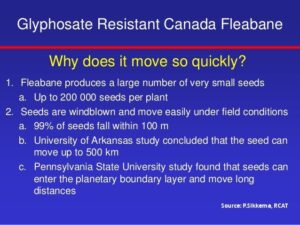 FB). First identified in southern Ontario in 2010, GRFB has spread like wildfire across Ontario and is now identified in other areas including Quebec. Fleabane seeds are small, airborne, and stick to clothing, equipment, animals. A single mature plant can produce up to 250,000 seeds/plant. Most fleabane biotypes are glyphosate-resistant, but other biotype herbicide resistance to group 2, 2 & 9, and 22 exist.Good control options exist in corn and wheat, but is problematic in soybeans.
FB). First identified in southern Ontario in 2010, GRFB has spread like wildfire across Ontario and is now identified in other areas including Quebec. Fleabane seeds are small, airborne, and stick to clothing, equipment, animals. A single mature plant can produce up to 250,000 seeds/plant. Most fleabane biotypes are glyphosate-resistant, but other biotype herbicide resistance to group 2, 2 & 9, and 22 exist.Good control options exist in corn and wheat, but is problematic in soybeans.
Article-OGF: https://b.link/GRFB_oNTFARM
Ont Diagostic Day presentation: https://b.link/Sikkama_GRFB
Research report- Dr Peter Sikkema, RCAT : https://b.link/Sikkema_GRFB
- February 28, 2021
- Blog, Products
- Posted by Felix.Weber
- Comments Off on Servicing and Storing your Wintex Honda Small Engine
A 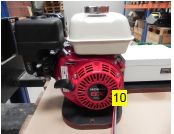 Mennonite neighbour of mine operates a small engine business. He services a lot of small engines from different equipment, and he commented recently that the most common issues he sees in problems with the motor could have been avoided by regular service according to the owner’s manual. The Honda gas engine on the Wintex is a commercial quality motor that can provide many years of reliable, trouble-free service. Refer to your owners manual for scheduled maintenance including these items
Mennonite neighbour of mine operates a small engine business. He services a lot of small engines from different equipment, and he commented recently that the most common issues he sees in problems with the motor could have been avoided by regular service according to the owner’s manual. The Honda gas engine on the Wintex is a commercial quality motor that can provide many years of reliable, trouble-free service. Refer to your owners manual for scheduled maintenance including these items
- Changing the engine oil at first 20 hrs and then every 6 mths or 100 hrs
- Air filter service/replace
- Clean sediment cup
- Spark plug replace yearly or 300 hours
- Drain fuel or use a fuel stabilizer. Check if the fuel tank is clean
- Service fuel filter
- The Start recoil is in good condition & operates smoothly
Contact support@agbusiness.ca. if you need a copy of the Honda owners [...]
- February 28, 2021
- Blog, Production
- Posted by Brian Hall
- Comments Off on Phosphorus Balance Calculator
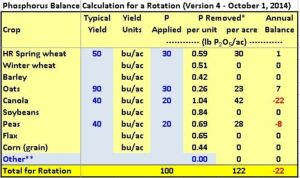 Manitoba Agriculture has developed a simple Phosphorus (P) spreadsheet calculator that allows users to input yield information and applied P during a rotation. A P balance is determined based on crop removal values, to show if soil P is being built, maintained or depleted. Phosphorus from manure applied during a rotation allows users to balance P over cropping cycle.
Manitoba Agriculture has developed a simple Phosphorus (P) spreadsheet calculator that allows users to input yield information and applied P during a rotation. A P balance is determined based on crop removal values, to show if soil P is being built, maintained or depleted. Phosphorus from manure applied during a rotation allows users to balance P over cropping cycle.
Phospohorus Balance Calculator (XLS)

